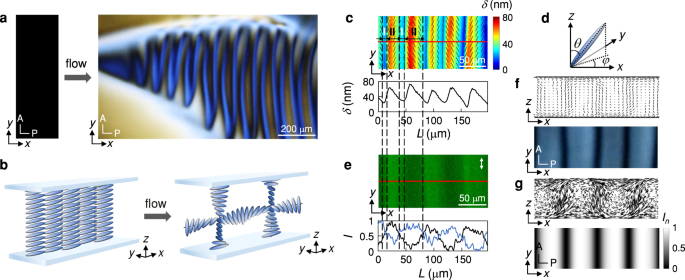2024-01-08 ノースカロライナ州立大学(NCState)

◆これらのロボットは液晶エラストマーで作られ、表面温度が55度摂氏以上の場合、リボンが転がる動きをします。また、研究者はこれが未知の環境をマッピングするのに役立つ可能性があると述べています。挙動はコンピューターや人間の制御なしに行われ、物理的な構造と素材によって決定される「物理的な知能」に基づいています。
<関連情報>
- https://news.ncsu.edu/2024/01/roll-spin-orbit-soft-robot/
- https://www.pnas.org/doi/10.1073/pnas.2312680121
自律型周期反転スピン軌道ソフトロボットのための欠陥ねじれリングトポロジー Defected twisted ring topology for autonomous periodic flip–spin–orbit soft robot
Fangjie Qi, Yanbin Li https://orcid.org/0000-0003-0870-4507, Yaoye Hong, Yao Zhao, Haitao Qing, and Jie Yin
Proceedings of the National Academy of Sciences Published:January 9, 2024
DOI:https://doi.org/10.1073/pnas.2312680121
Significance
Topology and defect are crucial for autonomous soft mobile machines made of soft materials since they can dramatically change materials’ responses. However, their interplay on autonomous motion remains largely unexplored. Here, we show that simply binding the two open ends of a twisted ribbon forms a closed-loop twisted ring topology alongside a defect at the binding site, generating distinct self-motion modes. As opposed to linear motion in self-rolling twisted ribbons under constant thermal actuation, the defected twisted ring exhibits three periodic coupled self-flip–spin–orbit motion with programmed circular and re-programmed non-circular paths in free and confined spaces, respectively, arising from the defect-induced rotational symmetry breaking in the twisted ring topology. This work has potential in autonomous robotic mapping of unstructured environments.
Abstract
Periodic spin–orbit motion is ubiquitous in nature, observed from electrons orbiting nuclei to spinning planets orbiting the Sun. Achieving autonomous periodic orbiting motions, along circular and noncircular paths, in soft mobile robotics is crucial for adaptive and intelligent exploration of unknown environments—a grand challenge yet to be accomplished. Here, we report leveraging a closed-loop twisted ring topology with a defect for an autonomous soft robot capable of achieving periodic spin-orbiting motions with programmed circular and re-programmed irregular-shaped trajectories. Constructed by bonding a twisted liquid crystal elastomer ribbon into a closed-loop ring topology, the robot exhibits three coupled periodic self-motions in response to constant temperature or constant light sources: inside-out flipping, self-spinning around the ring center, and self-orbiting around a point outside the ring. The coupled spinning and orbiting motions share the same direction and period. The spinning or orbiting direction depends on the twisting chirality, while the orbital radius and period are determined by the twisted ring geometry and thermal actuation. The flip–spin and orbiting motions arise from the twisted ring topology and a bonding site defect that breaks the force symmetry, respectively. By utilizing the twisting-encoded autonomous flip–spin–orbit motions, we showcase the robot’s potential for intelligently mapping the geometric boundaries of unknown confined spaces, including convex shapes like circles, squares, triangles, and pentagons and concaves shapes with multi-robots, as well as health monitoring of unknown confined spaces with boundary damages.



